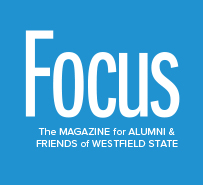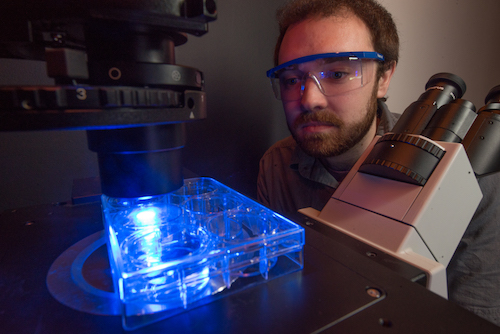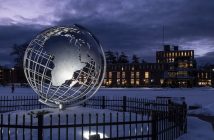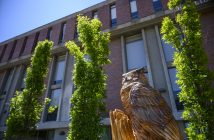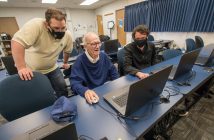New fluorescence microscope is advancing skills, but more equipment is needed.
Students in the Biology Department can literally count cells—and observe cell death—through the lens of a new, state-of-the-art fluorescence microscope in the Science and Innovation Center. Purchased for $45,000 thanks to the Westfield State University Foundation, Inc., individual donors, and Academic Affairs, the scope is one of many pieces of equipment that are critical to the success of budding scientists hard at work in the new Center. It is also the only tool already in hand.
“We’re enhancing the student experience of biology majors at Westfield State,” says Jennifer Hanselman, Ph.D., associate professor and Chair of the Biology Department, noting the goal is to prepare students for the workforce or advanced studies. “Even though our laboratory space has been modernized, we still need to upgrade the equipment that helps train our students in the valuable skills that are required by employers and in research facilities.”
Dr. Hanselman says additional equipment is needed for the ecological cell and molecular disciplines. Items needed include DNA electrophoresis equipment, microscopes, and ecological field and lab equipment.
The fluorescence microscope is the first key piece of equipment in use for multiple hours a day by numerous faculty members and students, including David Doe, Ph.D., and Kelly Anne McKeown, Ph.D. “I was so excited when we got the microscope,” says Robin E. White, Ph.D., assistant professor of biology. “Without it, we were limiting how we were training our students. Today, our students will be more competitive candidates for graduate studies and future jobs.”
Dr. White says students use the microscope to visualize neuronal cell death in zebrafish, to identify different types of cells, and also to visualize cancer cells.
“In my independent study, I’m testing the protective effects beta-carotene has on neurons and using the fluorescence microscope to observe cell death,” says Kristen Fuller ’17, a biology major and vice president of the Biology Club. “I cannot imagine my learning experience here at Westfield State without the fluorescence microscope.”
Robert Haluska ’17 uses the scope for his seniors honors project; it allows him to count how many cells he has using a nuclear stain, and he can quantify the shape of the cells. “Seeing the shape of the cell is a key component in my project,” he says. “I would not feel as confident about my lab skills without the fluorescence microscope.”
To help make more equipment purchases possible, visit westfieldalumni.org.
